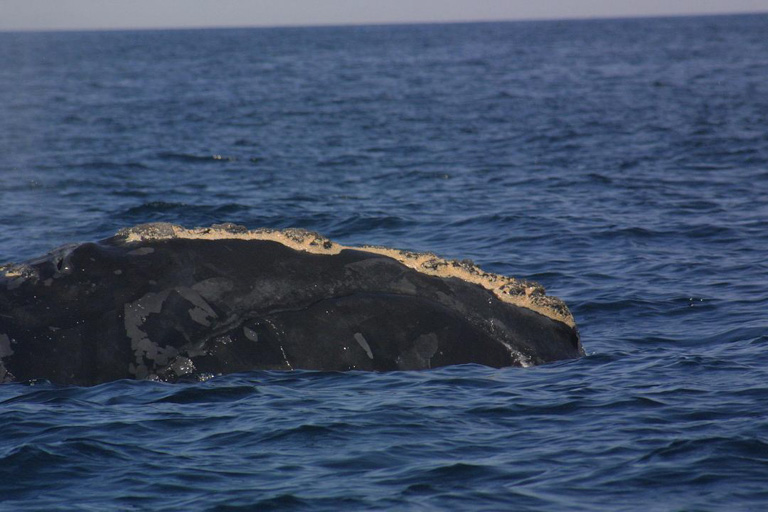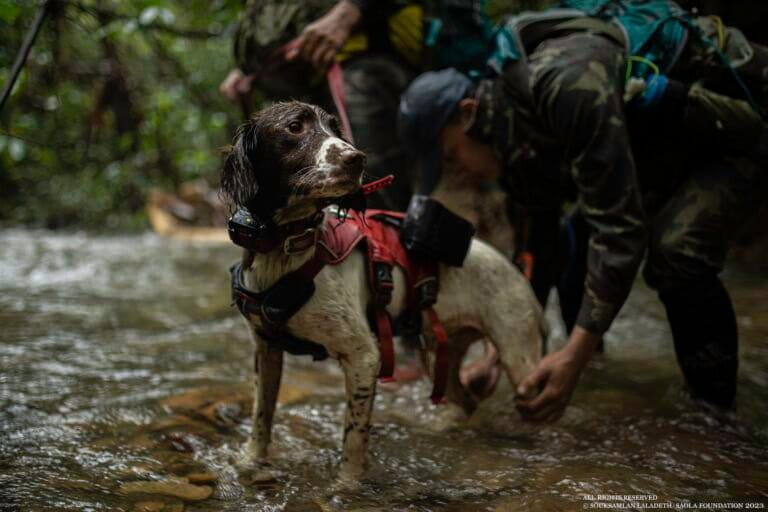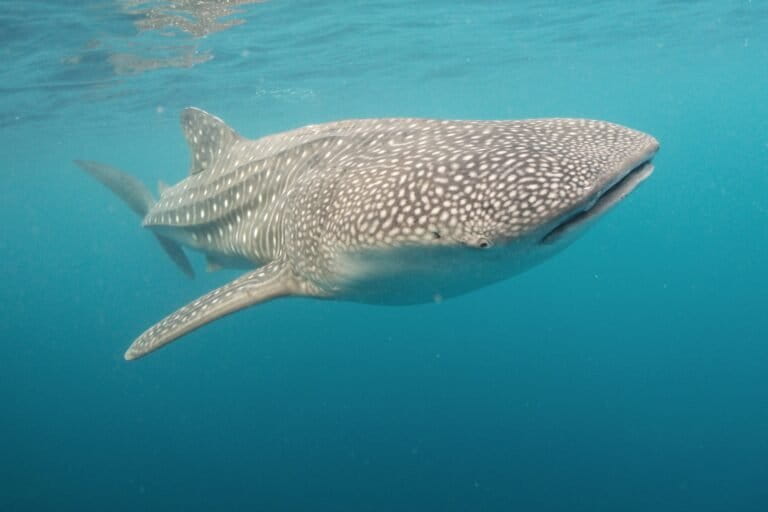- A young North Atlantic right whale died off the coast of Massachusetts in August, probably as the result of entanglement in fishing gear.
- After centuries of hunting, the right whale population in the North Atlantic has failed to recover, in large part because they’re prone to getting entangled in fishing gear.
- Only about 450 of the animals remain, after 17 died between late 2016 and 2017, and no new calves were observed last winter.
Entanglement in fishing gear has claimed the life of a second North Atlantic right whale (Eubalaena glacialis) in 2018, according to reports from the National Oceanic and Atmospheric Administration (NOAA).
Boaters reported the floating body of a whale off the coast of Martha’s Vineyard, an island in the U.S. state of Massachusetts, on Aug. 26. Two days later, authorities from NOAA and the U.S. Coast Guard put a satellite tag on the carcass and retrieved tissue samples, but they decided not to tow it into shore because it was so decomposed.

Only around 450 North Atlantic right whales remain, making the IUCN-listed endangered species one of the most threatened marine mammals on the planet. Late 2016 through the end of 2017 saw the confirmed deaths of 17 of the animals, leading NOAA to classify the period as an “unusual mortality event.”
The species’ recovery, after centuries of hunting because it floated when harpooned and as a result was the “right” whale to kill, has been further hampered by low reproduction rates. Observers saw no new calves in the whale’s breeding grounds this past winter off the coasts of Georgia and Florida. Recent research postulates that the persistent drag of entanglements in fishing gear — which ensnares more than 80 percent of North Atlantic right whales at some point in their lifetimes, according to a 2012 study — may be making it difficult for females to put on weight and carry calves to term.
The other right whale known to have died in the North Atlantic this year was a 10-year-old female measuring about 12 meters (39 feet) in length.

The carcass spotted in August, by contrast, was a 9-meter (30-foot) male, according to measurements taken during a necropsy that occurred when the whale floated close to shore. NOAA said the whale’s length put its age at about a year and a half. That age would make him one of only five calves born in the 2016-2017 season. The necropsy team recorded lesions on the whale’s body that were consistent with entanglement, though it was free of lines at the time of the investigation.
“If they get entangled, they can’t get up to the surface to breathe,” Sarah Sharp, a veterinarian with the International Fund for Animal Welfare, told the Cape Cod Times.

A “ropeless” consortium of conservationists, scientists, engineers and fishers along the east coast of Canada and the United States is working to come up with and put into use new types of fishing gear that are less likely to ensnare right whales. The group last met in February, with plans for another meeting in November. The aim is to avoid the chance of entanglement to prevent the hindrance to the population’s growth and the outright drowning of whales as in this case.
“Death by drowning for a mammal is about as bad as it gets,” Charles “Stormy” Mayo, a right whale researcher at the Center for Coastal Studies in Provincetown, Massachusetts, told the Cape Cod Times. “Assuming it drowned or suffered from cuts or perhaps starvation, [those situations] are sad for the whale, and as some have said represent almost a kind of torture.”
Banner image of a team disentangling a whale courtesy of NOAA Photo Library (post0025) (CC BY 2.0), via Wikimedia Commons.
Citations
Knowlton, A. R., Hamilton, P. K., Marx, M. K., Pettis, H. M., & Kraus, S. D. (2012). Monitoring North Atlantic right whale Eubalaena glacialis entanglement rates: a 30 yr retrospective. Marine Ecology Progress Series, 466, 293-302.
Pace, R. M., Corkeron, P. J., & Kraus, S. D. (2017). State-space mark-recapture estimates reveal a recent decline in abundance of North Atlantic right whales. Ecology and Evolution, 7(21), 8730-8741.
FEEDBACK: Use this form to send a message to the author of this post. If you want to post a public comment, you can do that at the bottom of the page.














